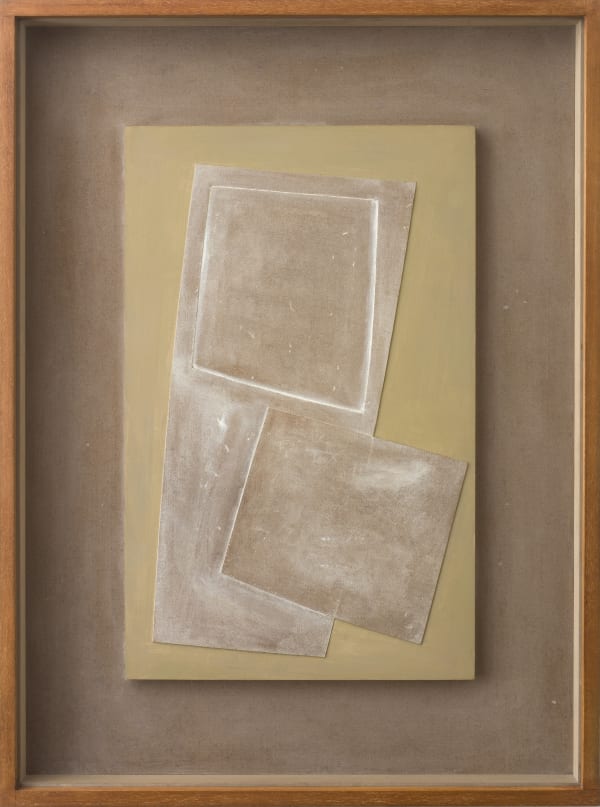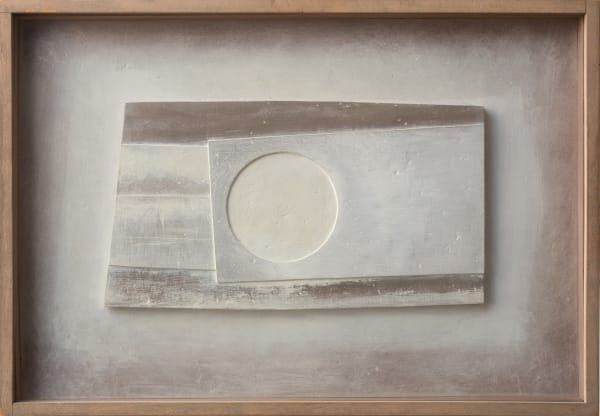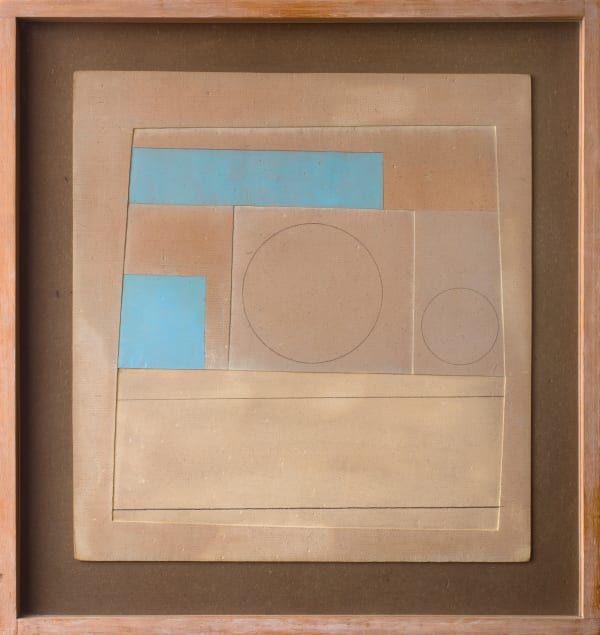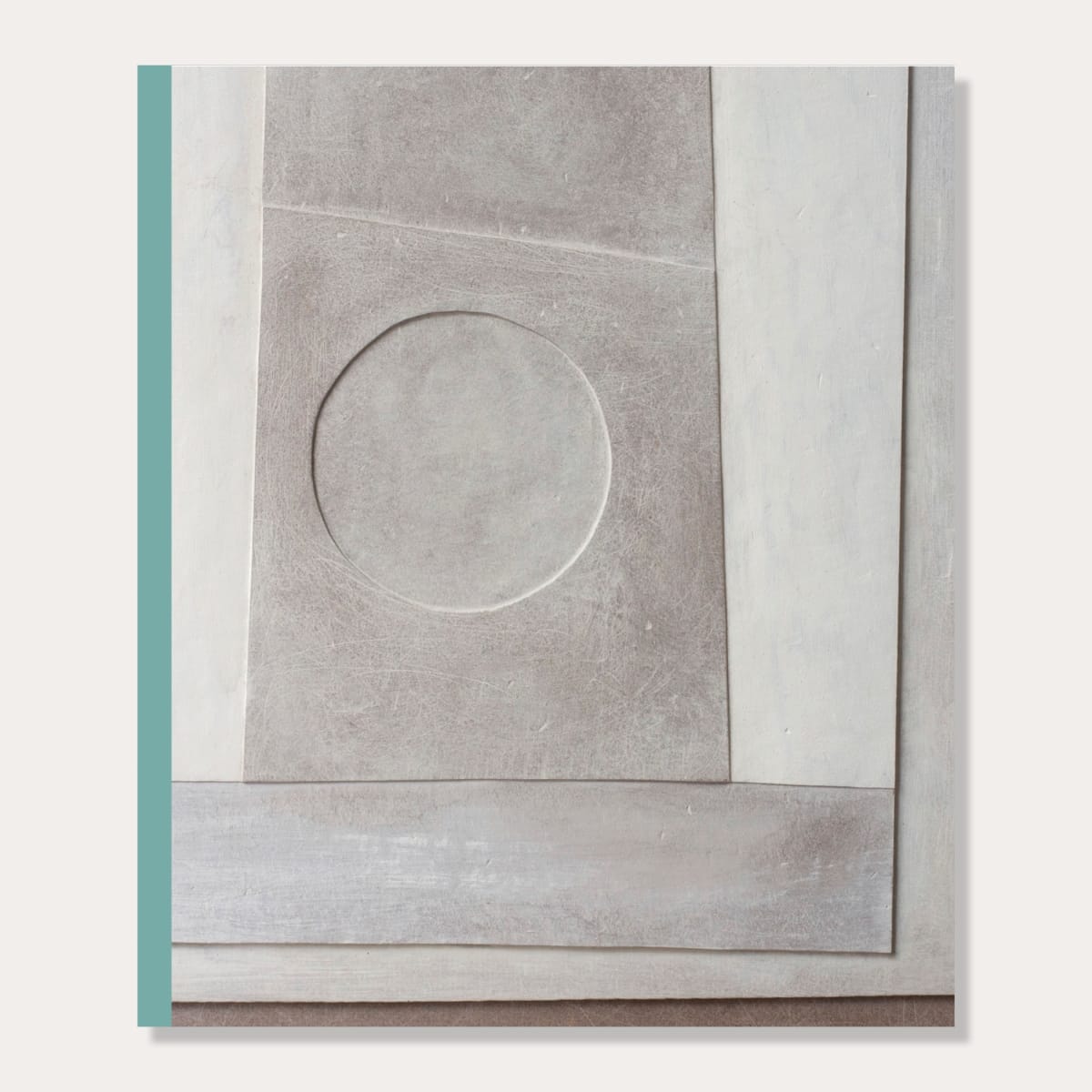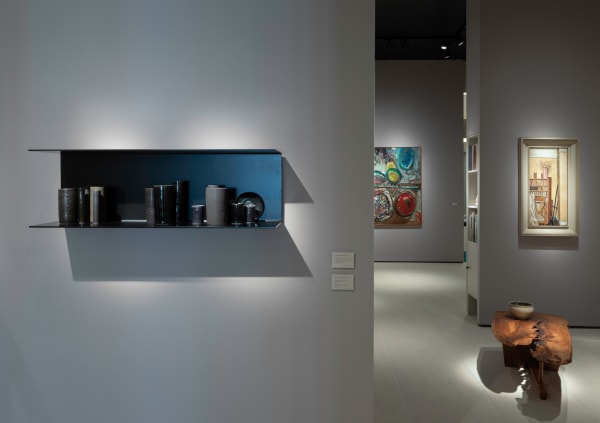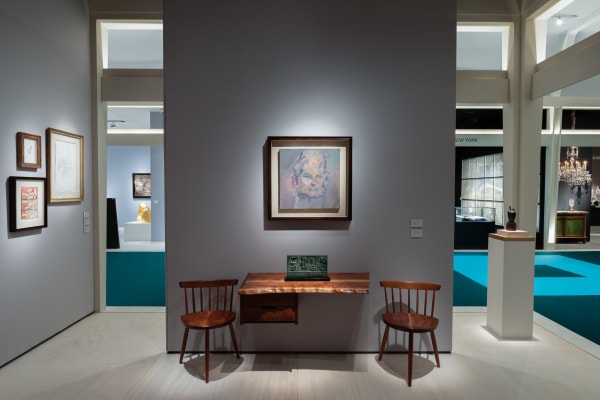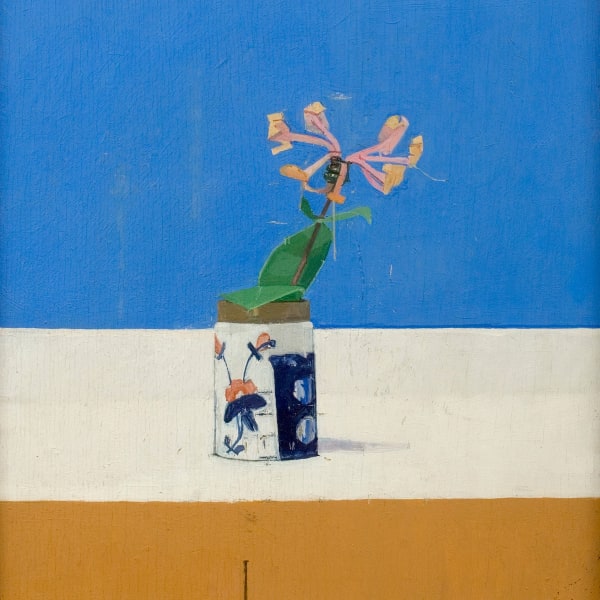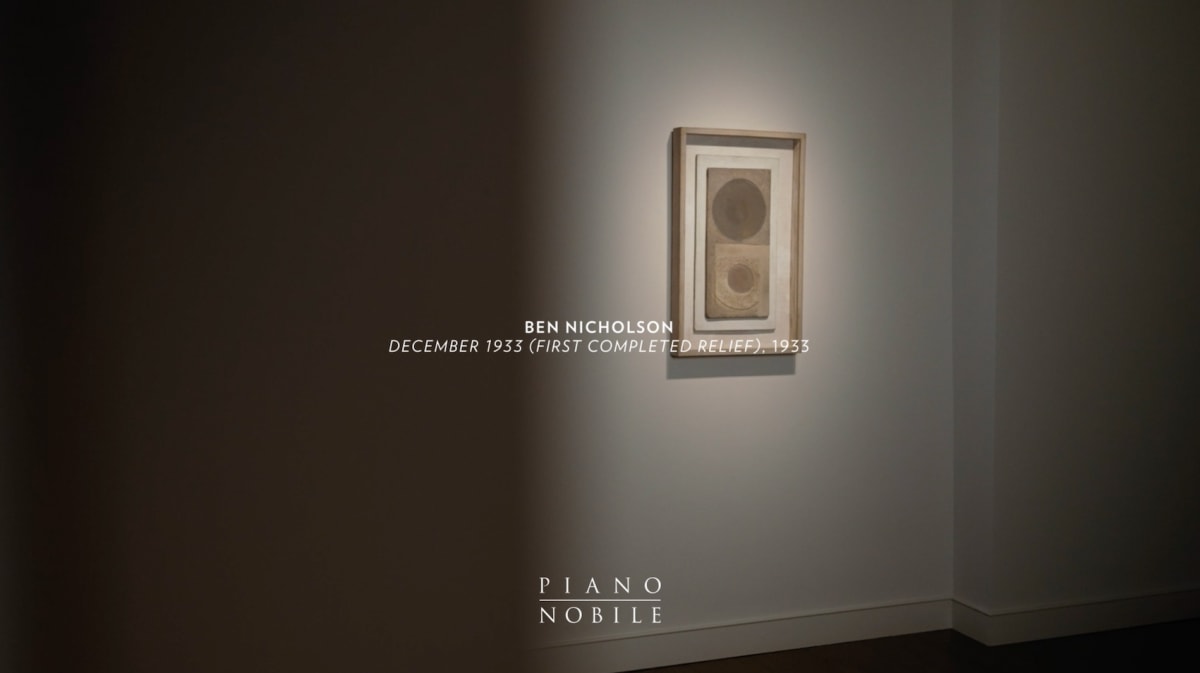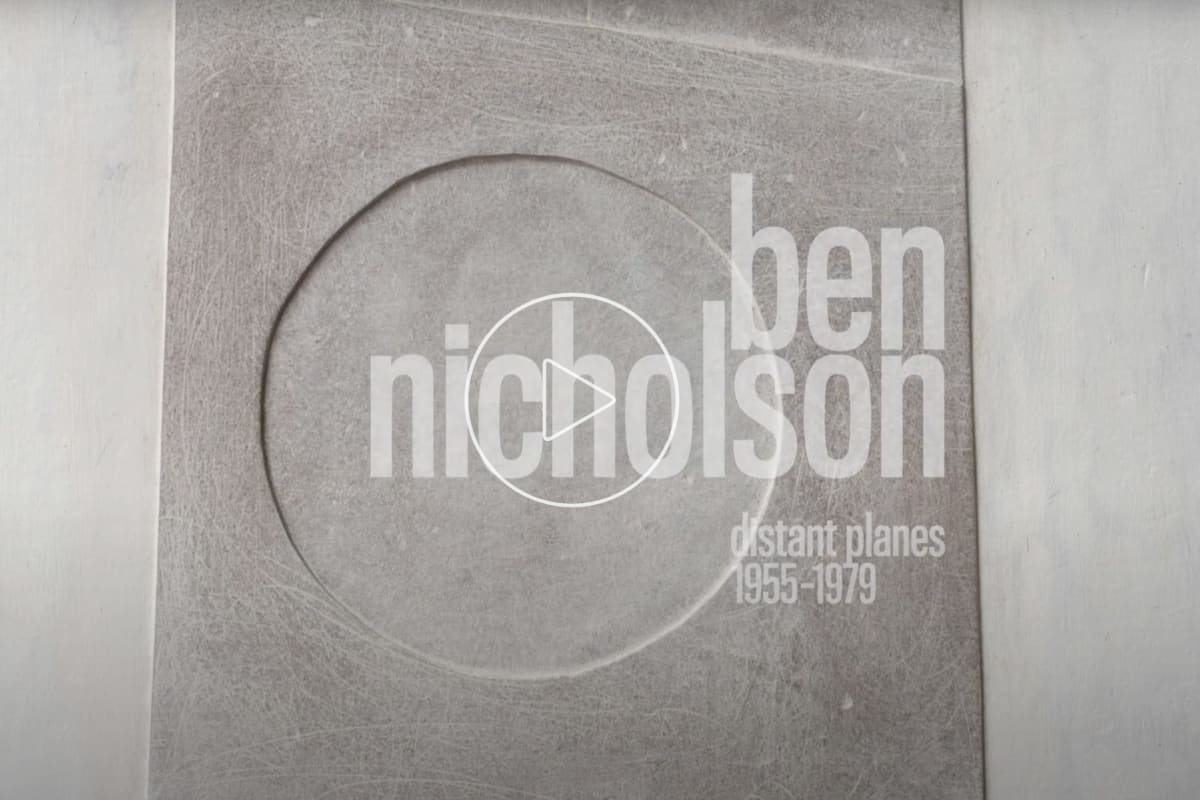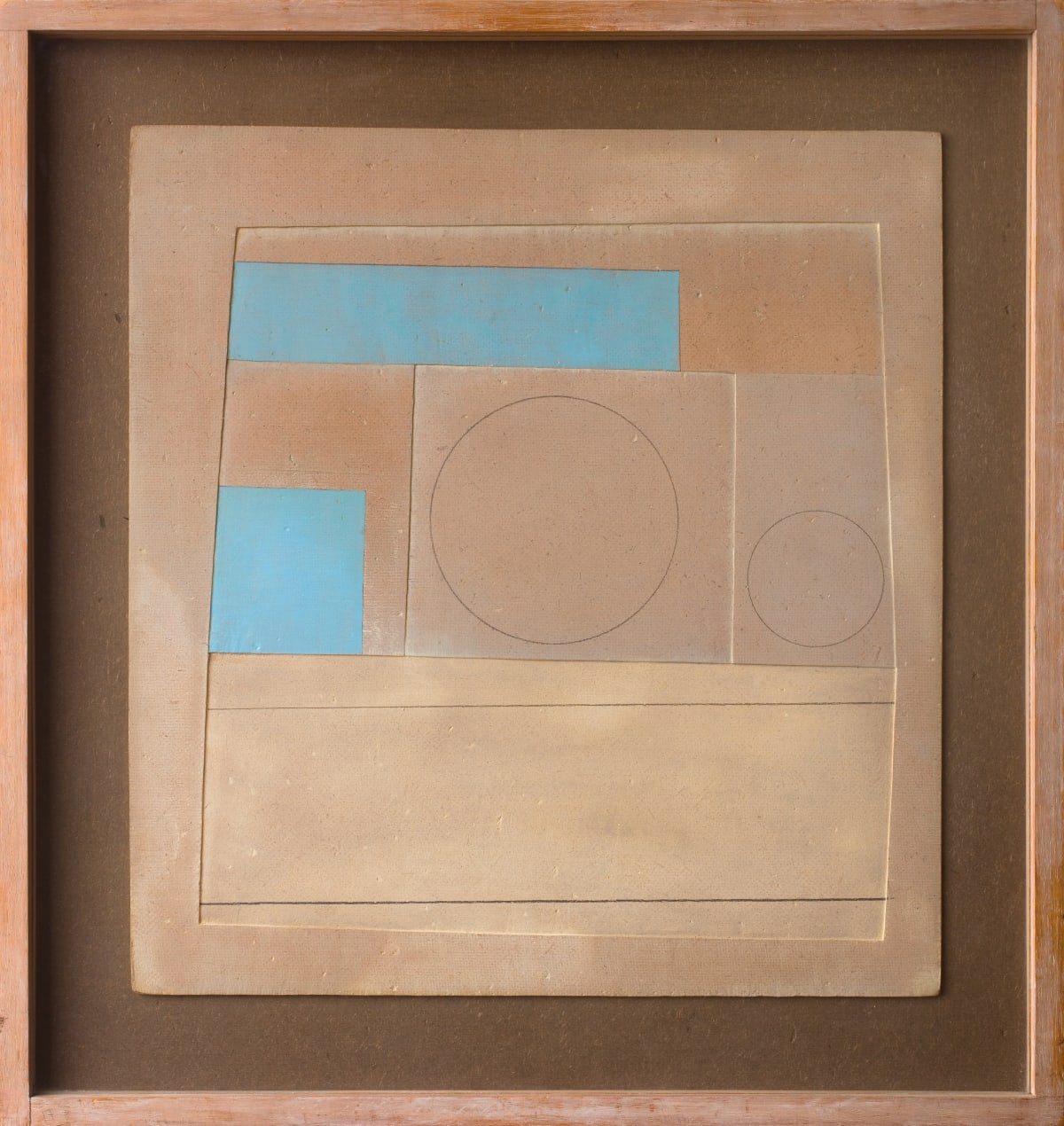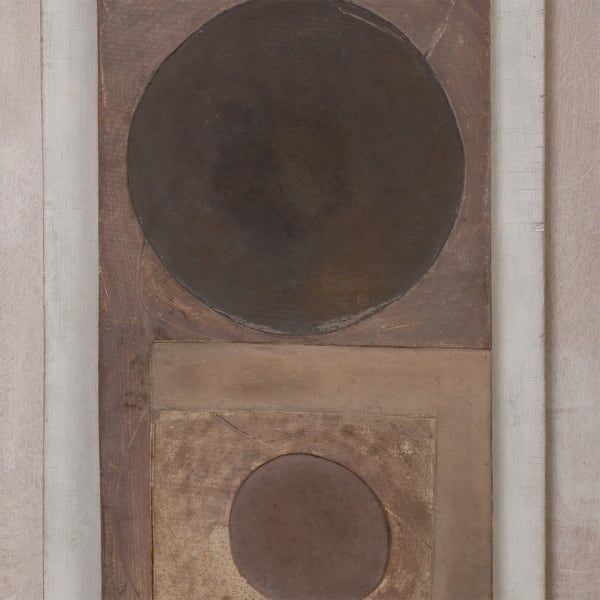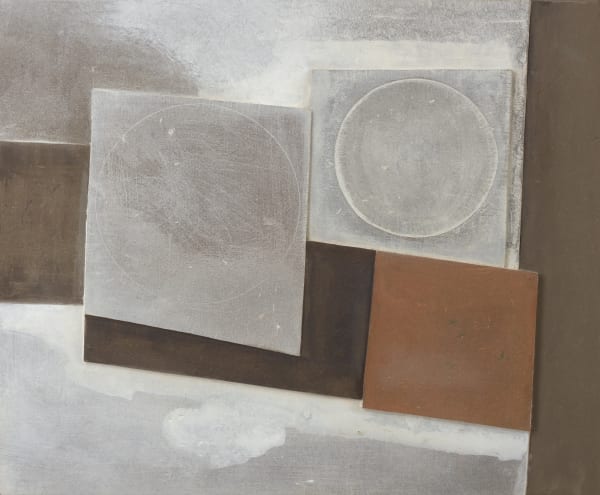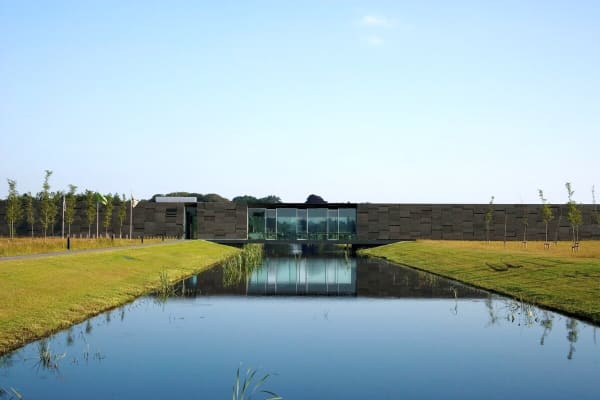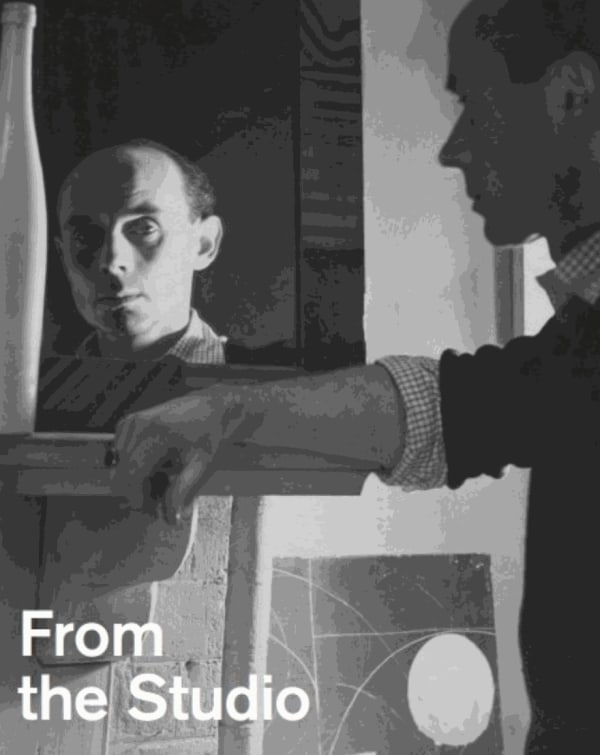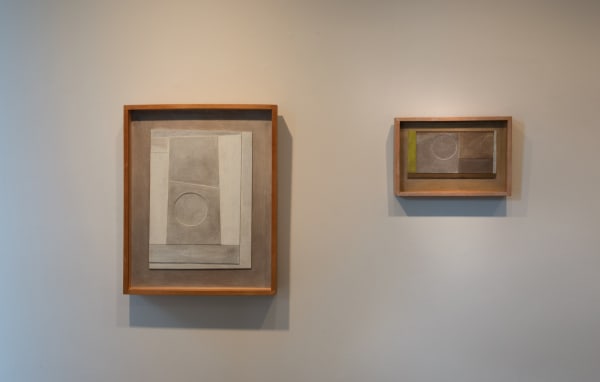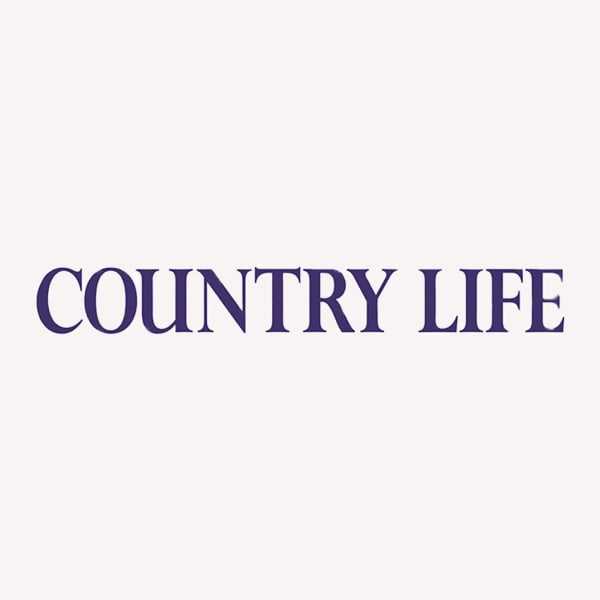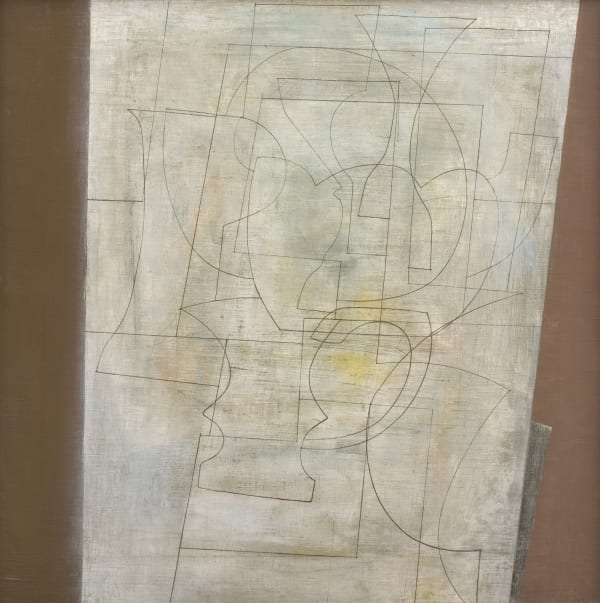Ben Nicholson
The gallery regularly handles, acquires and advises on works by Ben Nicholson. For more information or the availability of work, please contact the gallery.
Ben Nicholson (1894 - 1982)
Ben Nicholson (1894–1982) was one of the few British modernist artists to win international recognition in his lifetime. His fame was underpinned in part by the white reliefs that he first made in February 1934, which were an original development—a picture tableau carved into and reimagined as a series of stacked planes, with those at lower depths revealed by removing sections of the upper planes. From an early age, beginning with his period in Lugano shortly after his marriage to the artist Winifred Roberts in 1920, his work was characterised by an ingenious combination of simplified forms and complex representation. His friendships with Christopher Wood and Alfred Wallis were significant in the late twenties, and they helped Nicholson to develop a greater tension between the painting as a material object and as a pictorial image. In 1931 he met the sculptor Barbara Hepworth, with whom he had triplets in 1934, and through their relationship he discovered a deepening interest in scraping and scratching into his materials—a practice that eventually led him to begin carving wooden boards in shallow relief. Escaping London for St Ives shortly before the outbreak of war in 1939, he made Cornwall his home and there began to reintroduce into his work a sense of place and, from 1945, his ‘still-life theme’, which he had learned at an early age from his father William Nicholson, a painter who collected elaborate ceramics and glassware.
For a sustained period between 1945 and 1958, Nicholson often made sophisticated cubistic still-life paintings—many of them on a large scale—and these won him critical recognition in the United States and Europe. He received the painting prize at the Pittsburgh International Exhibition in 1952, the inaugural Guggenheim International Award in 1956 and various prizes at the São Paulo Bienal in 1957 and the Venice Biennale in 1958. In 1958, Nicholson left England for Ticino, Switzerland, where he settled overlooking Lake Maggiore with his third wife the photographer Felicitas Vogler. His period in Switzerland, between 1958 and 1971, coincided with a return to carved relief, while his final period—a return to England in 1971—was marked by continued reflections on landscape and still life. His artistic achievements received official recognition and he was made a member of the Order of Merit in 1968.
-

Ben Nicholson: Defining Works
1929-1954 19 Sep - 10 Dec 2024 Piano NobileAn artist of rare ingenuity, sharp wit and copious invention, Ben Nicholson was among the leading international modernist artists of the twentieth century. In this exhibition Piano Nobile presented significant...Read more -

Treasure House Fair
Royal Hospital Chelsea 27 Jun - 2 Jul 2024 Art FairPiano Nobile returned to The Treasure House Fair in June of 2024. We highlighted works from across the twentieth century, with early paintings by Augustus John and Walter Sickert, Duncan...Read more -

Treasure House Fair
Royal Hospital Chelsea 22 - 26 Jun 2023 Art FairThe Treasure House Fair is a celebration of outstanding and rare art and antiques. Held at The Royal Hospital Chelsea the fair continues the tradition of its predecessors, Masterpiece and...Read more -

Masterpiece
Royal Hospital Chelsea 30 Jun - 6 Jul 2022 Art FairPiano Nobile exhibited at Masterpiece Art Fair in 2022, then London's leading art and antiques fair. Highlights from the gallery's stand included significant works by Walter Sickert, Henry Moore, Paul...Read more -

Drawn to Paper
Calder to Scott 2 Jul - 6 Aug 2021Paper is easily and variously marked. Charcoal and chalk scuff, smudge or slice; pen and ink dash, hatch and stipple; areas of colour shimmer in pastel, glow in gouache or...Read more -

Ben Nicholson
Distant Planes 1955-1979 15 Oct 2020 - 16 Apr 2021 Piano NobileBen Nicholson was one of the great British modernists of the twentieth century. This exhibition, curated with Dr Lee Beard, explored Nicholson’s years in Switzerland: a period of creative outpouring...Read more -

Masterpiece
Online Viewing Room 22 - 28 Jun 2020Highlights from our online display included work by Ben and Winifred Nicholson, William Turnbull, Leon Kossoff, Frank Auerbach, William Crozier, David Bomberg, Lucian Freud and Barbara Hepworth . Also on...Read more
-

Collectors' Focus: Post-war British Abstraction
Apollo October 7, 2024Though less popular abroad than it once was, British art of the 1940s and ’50s is still highly sought after at home, writes Emma Crichton-Miller....Read more -

InSight No. 157
Ben Nicholson | December 1933 (first completed relief), 1933 September 24, 2024Ben Nicholson’s relief carvings are a landmark in the history of modernist art. It was a new kind of art that married the tableau format...Read more -

InSight No. 127
Ben Nicholson | 1968 (ramparts) June 16, 2023Riding a wave of critical and commercial success, in the decades after the Second World War Ben Nicholson travelled around Europe and grew interested in...Read more -

InSight No. 119
Ben Nicholson | squares & circles February 24, 2023Ben Nicholson’s rare use of lithographs reflected his friendship with pioneers of improved print and typography. InSight No. 119 Ben Nicholson, squares & circles ,...Read more -

Museum Belvédère's Living the Landscape exhibition to include Piano Nobile loans
Oranjewoud, Holland June 20, 2022Piano Nobile are delighted to have loaned several works to Museum Belvédère's Living the Landscape exhibition. Focusing on the work of Ben Nicholson, Barbara Hepworth...Read more -

InSight No. 98
Ben Nicholson | November 1960 (Anne) March 2, 2022Ben Nicholson returned to relief carving with gusto shortly before moving to Switzerland in 1958. Throughout his Swiss period, his highly original reliefs won him...Read more -

Piano Nobile supports Ben Nicholson: From the Studio
Pallant House Gallery, Chichester June 26, 2021Ben Nicholson: From the Studio, on show at Pallant House Gallery, Chichester until 24th October 2021, presents an intimate look at Ben Nicholson's everyday inspirations....Read more -

InSight No. 63
Ben Nicholson | 1971 (two squares and very green) March 31, 2021In 1965, Ben Nicholson discovered a remarkable field of ancient standing stones in Brittany. For the next six years, he evoked the stones in his...Read more -

InSight No. 58
Ben Nicholson | Pisa, 1951 February 24, 2021Ben Nicholson produced only a small number of intaglio prints in his career. Each example is marked by pictorial subtlety and a craftsman-like understanding of...Read more -

The Late Show: Ben Nicholson
Antiques Trade Gazette | Frances Allitt November 5, 2020By the 1950s British artist Ben Nicholson (1894-1982) had achieved international recognition and was embarking on the second part of an illustrious career. Yet his...Read more -

Huon Mallalieu explores the art world's online response to the pandemic
Country Life October 30, 2020Huon discusses the online strategies of dealers during the stop-start stages of lockdown and favourably reviews Piano Nobile's digital presence, referencing Ben Nicholson: Distant Planes...Read more -

Jonathan Jones reviews Ben Nicholson at Piano Nobile in his Art Weekly column
The Guardian October 9, 2020Jonathan Jones disucsses Bristish abstraction from its emergence in 1840 through the early 20th century.Read more -

InSight No. 7
Ben Nicholson | May 1955 (green chisel) April 16, 2020Some neighbours make themselves a nuisance by playing the radio too loudly, crashing about in the kitchen, or having regular shouting matches. When he was...Read more







